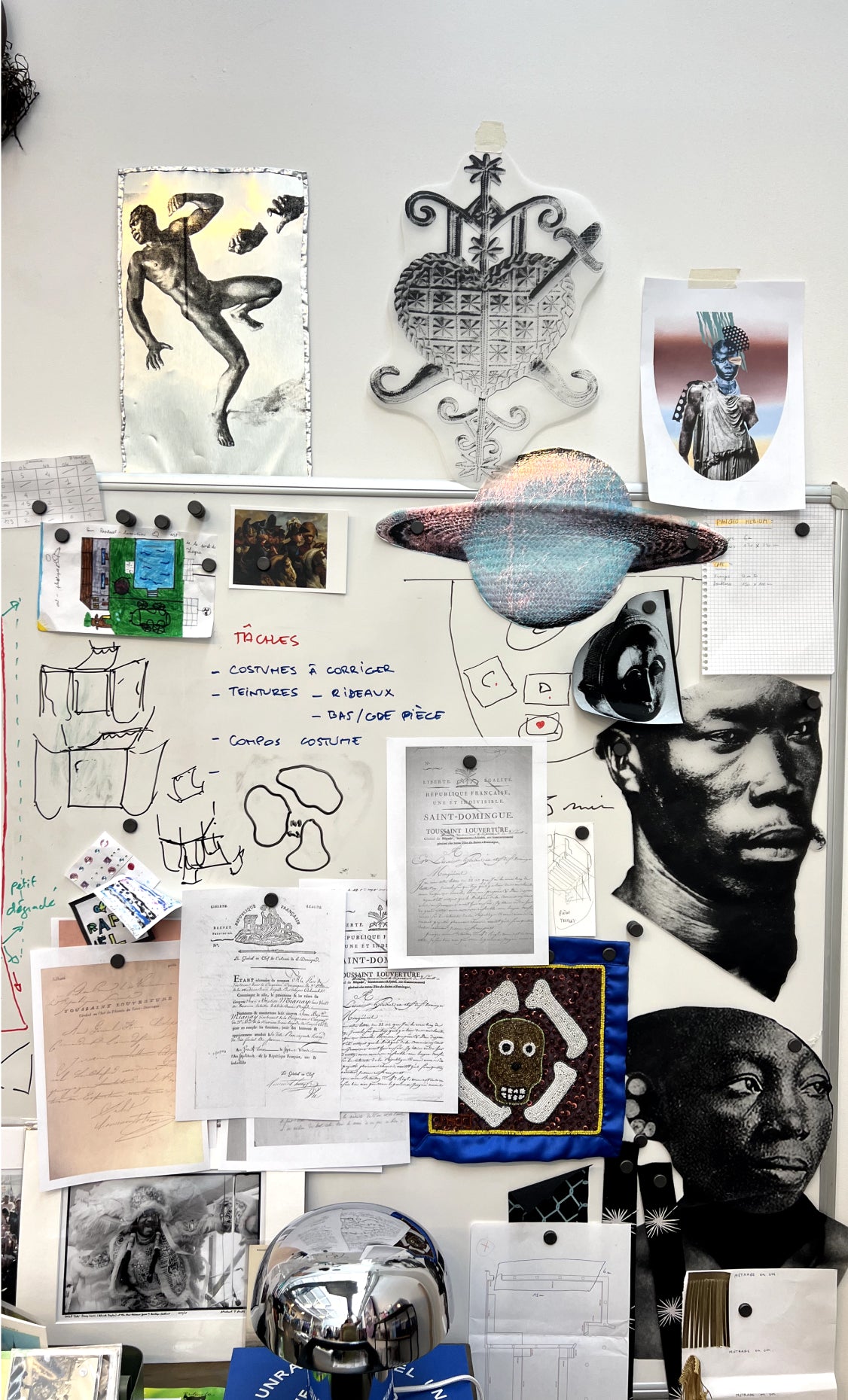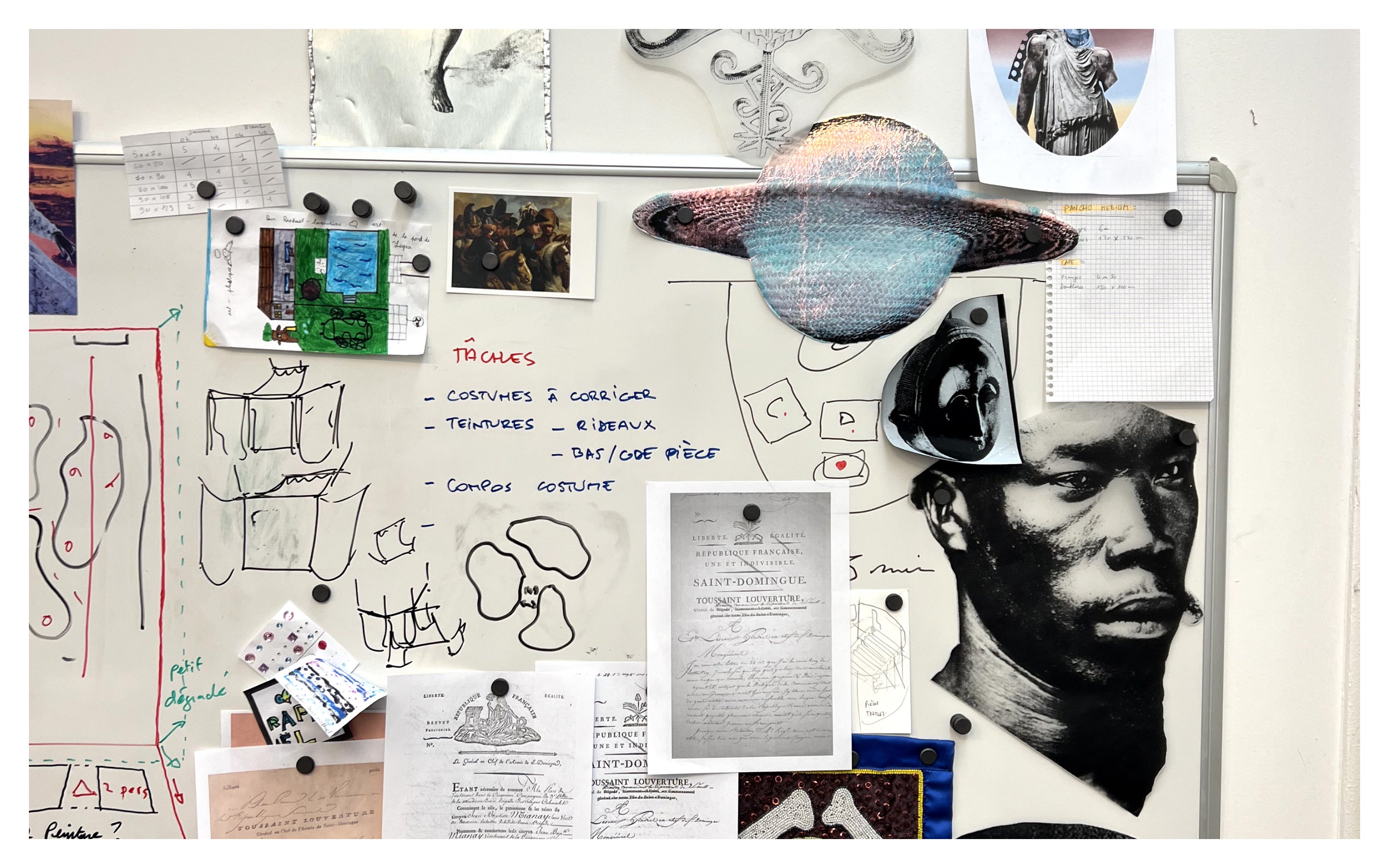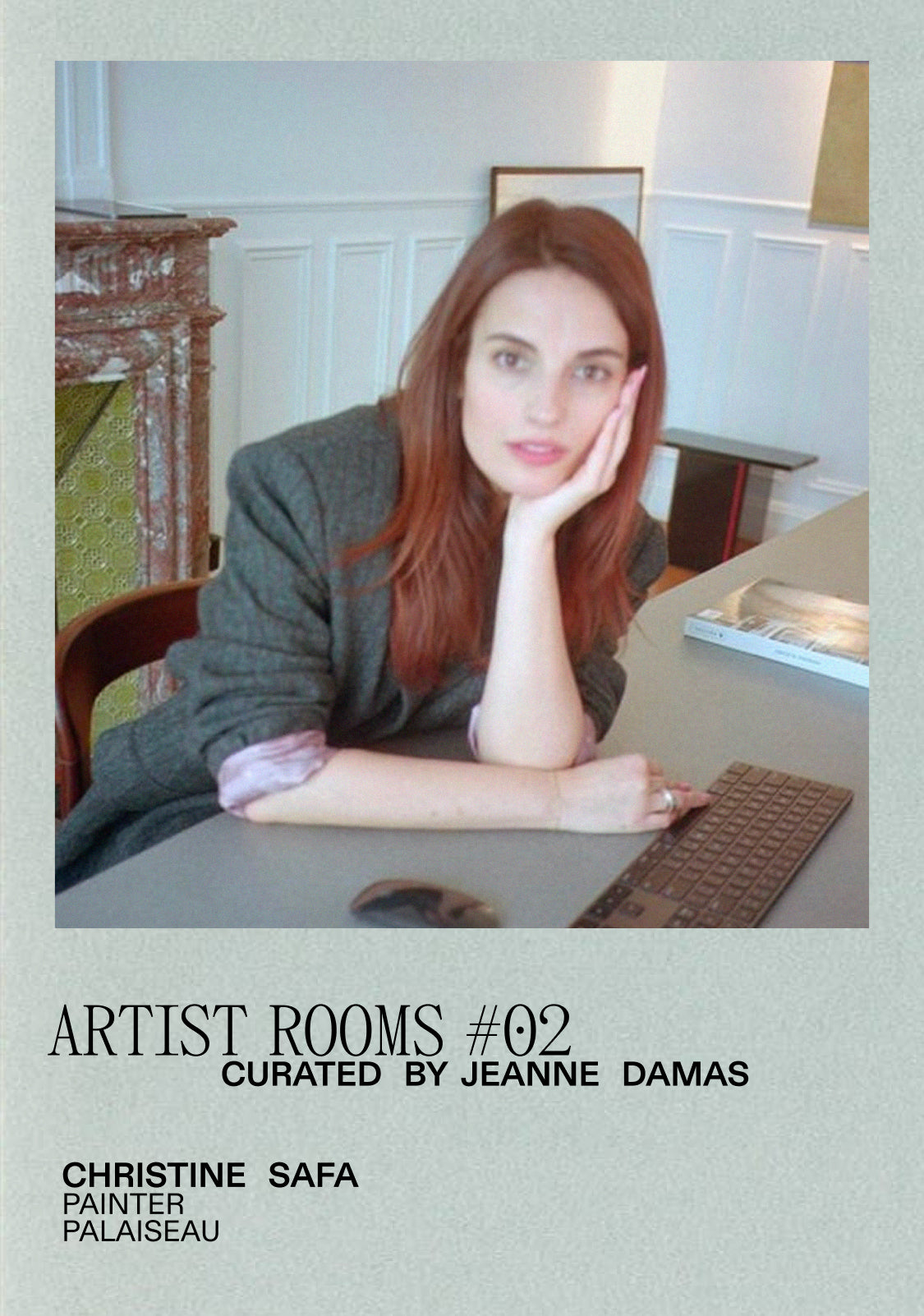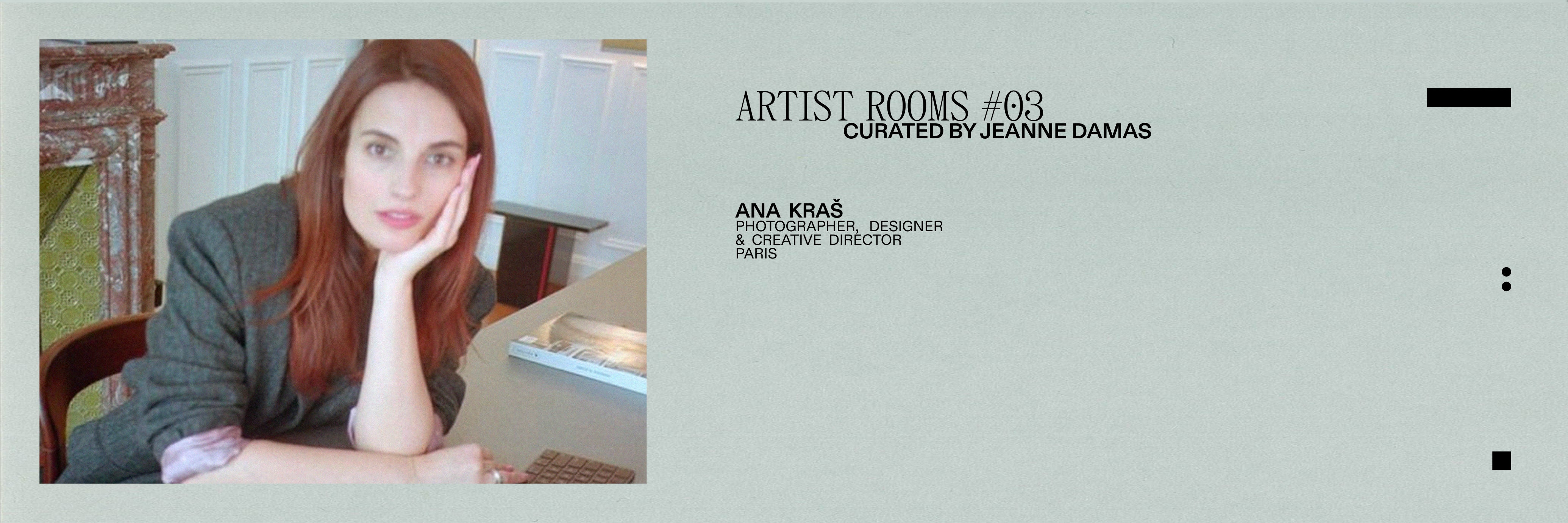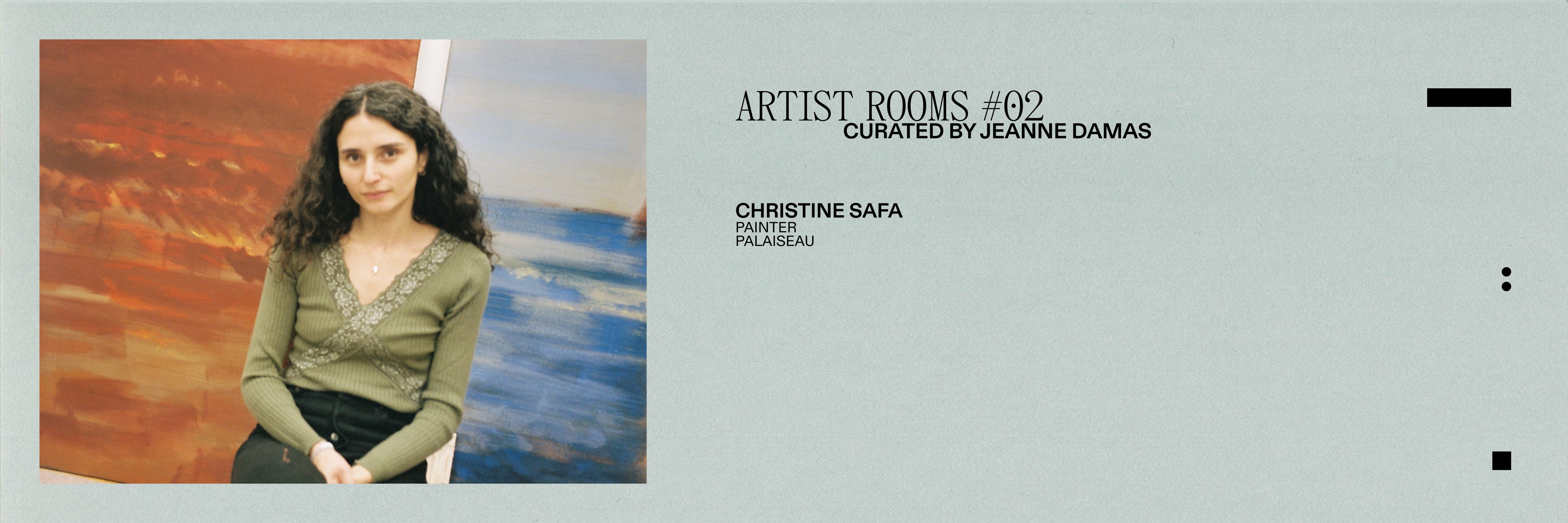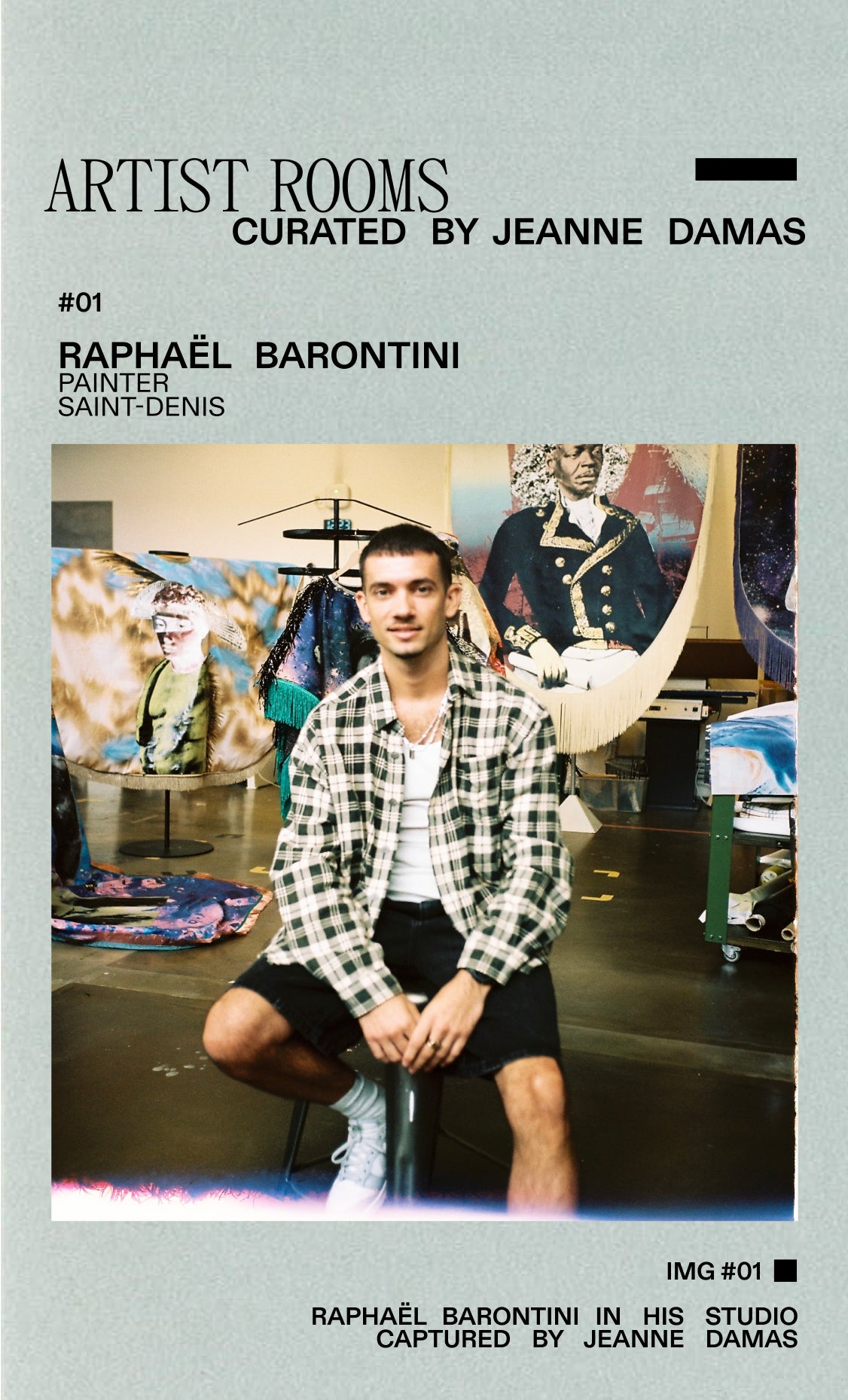
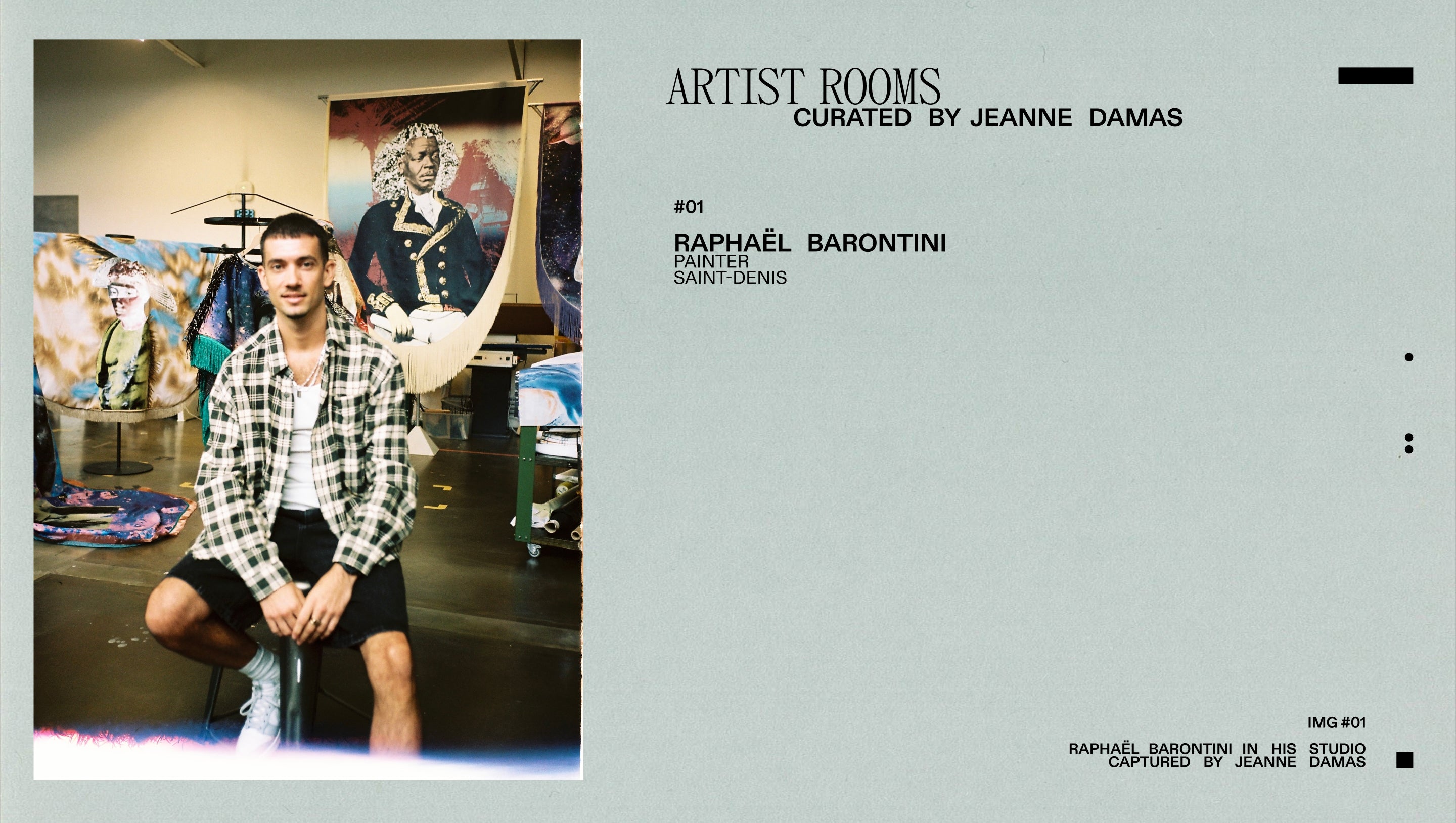
Discover with Jeanne Damas the work of French multi disciplinary artist Raphaël Barontini as she vitits his atelier in Saint Denis. Raphaël took over the Panthéon recently with an installation commemorating the heroes of the abolition of slavery and is currently working on his upcoming show at the Palais de Tokyo
INTERVIEW
JD: I read that you started with music. What led you to painting? Has art always been important to your family?
RB: Yes, I was very lucky, because both my parents were very cultured. They read a lot, they listened to music, and growing up in this atmosphere probably opened my mind and encouraged me to study art. I was raised in Saint-Denis, in a housing estate, where becoming an artist is not an obvious choice for young people thinking about their future.
JD: And being an artist is a rather nebulous concept, isn't it?
RB: Definitely. I was initially more attracted to music, so I played percussion and in carnival bands.
JD: Your father is a musician, I believe?
RB: He was a secondary school teacher and played music on the side. Because music was his passion, he created "The Winter Sound Festival", which he directed for 25 years. Music was always a big part of my life. I went to concerts, I was backstage from a very young age, and it also planted the seeds for my future artistic career.
The switch happened in secondary school, when a teacher said I should apply to art school. I had thought I might become a teacher, because I loved history, and I didn't really think that a career as an artist was possible.
"I was interested in the history of painting, the history of representation. That's why there are so many figures and portraits in my work: they are a nod to our history."
Raphaël BARONTINI
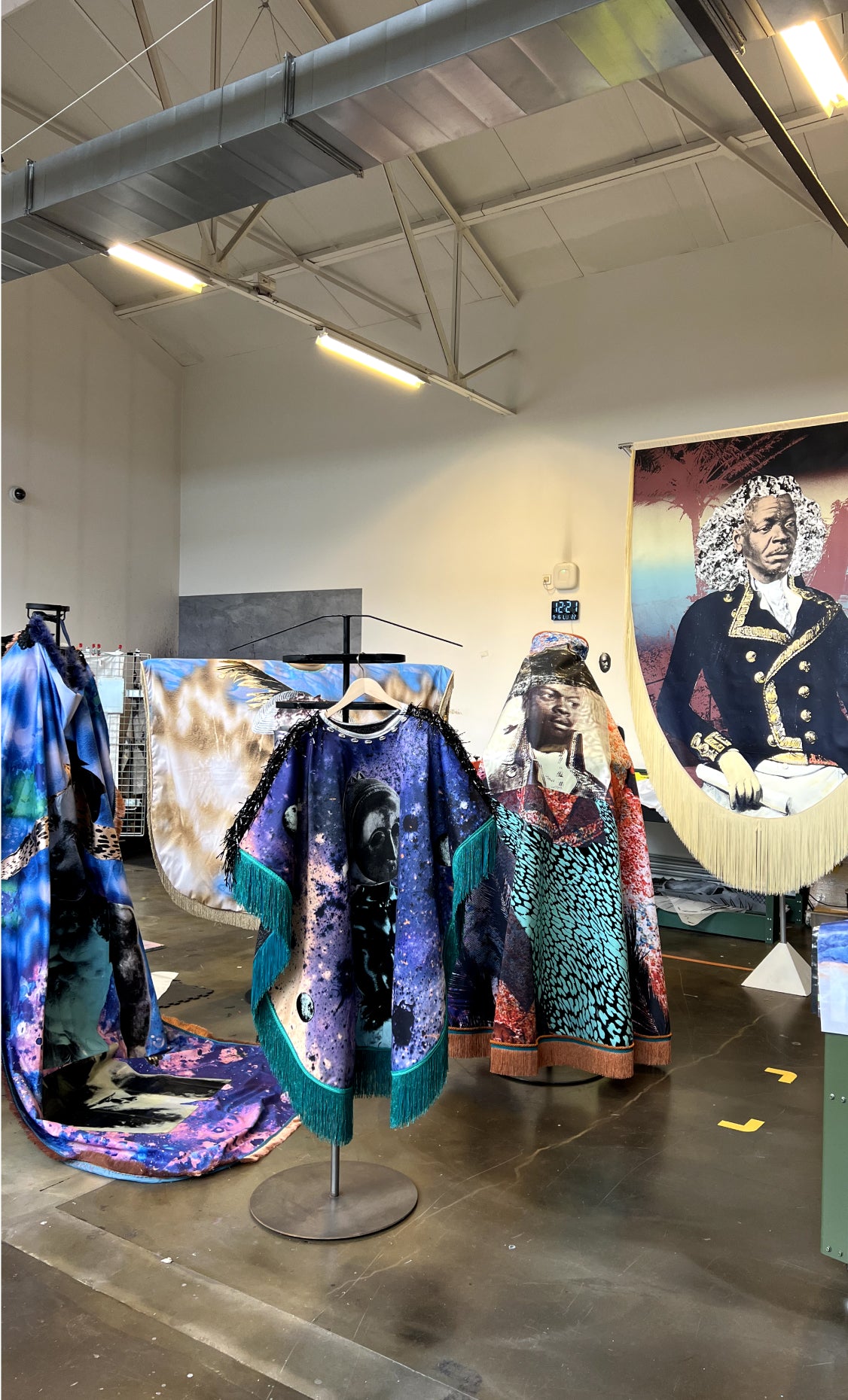
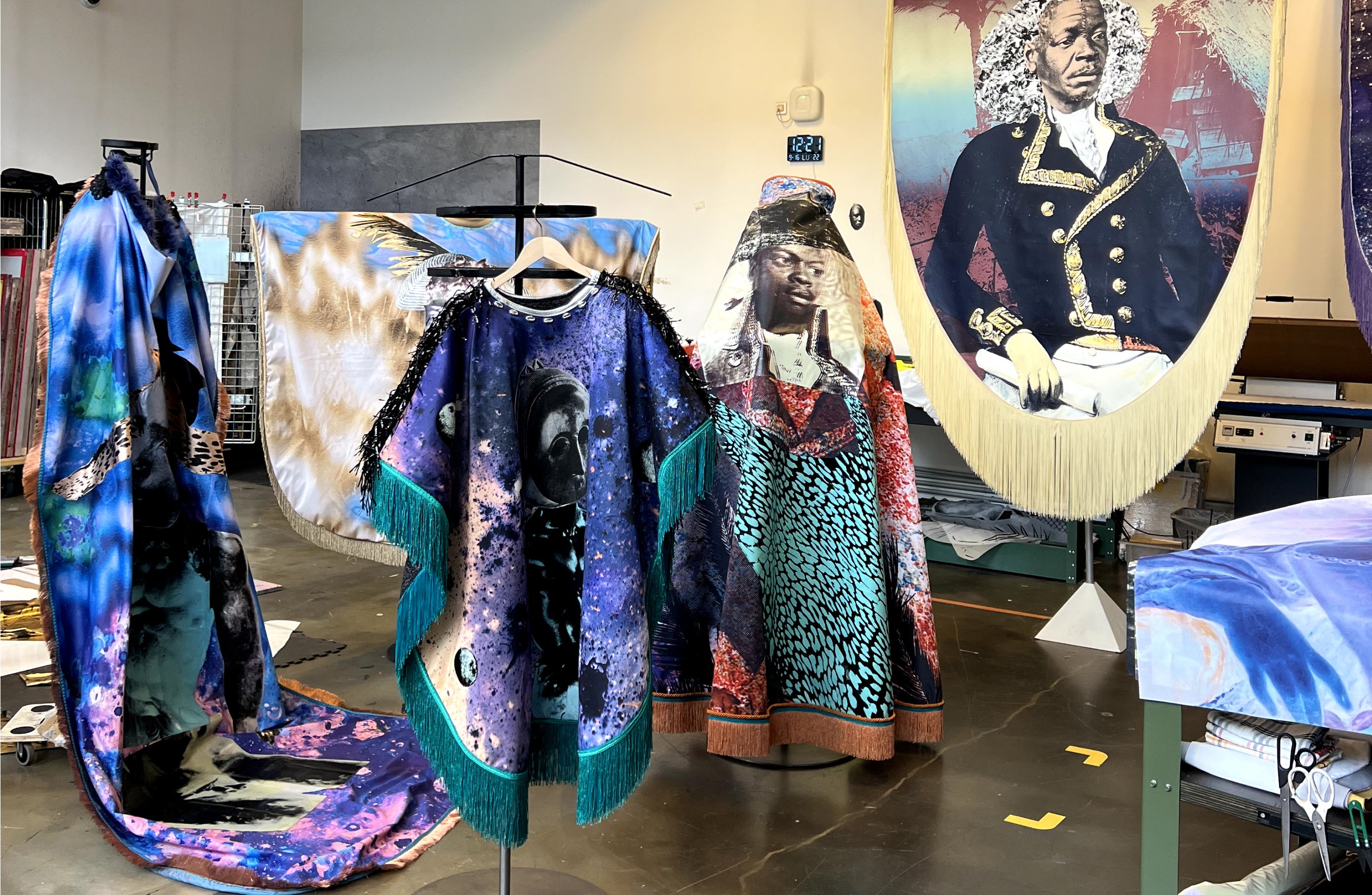
IMG #02
View of the studio
Toussaint Bréda cape Screen and digital printing on fabrics
and Louis Delgrès banner Acrylic paint and screen printing on canvas 240 x 165 cm
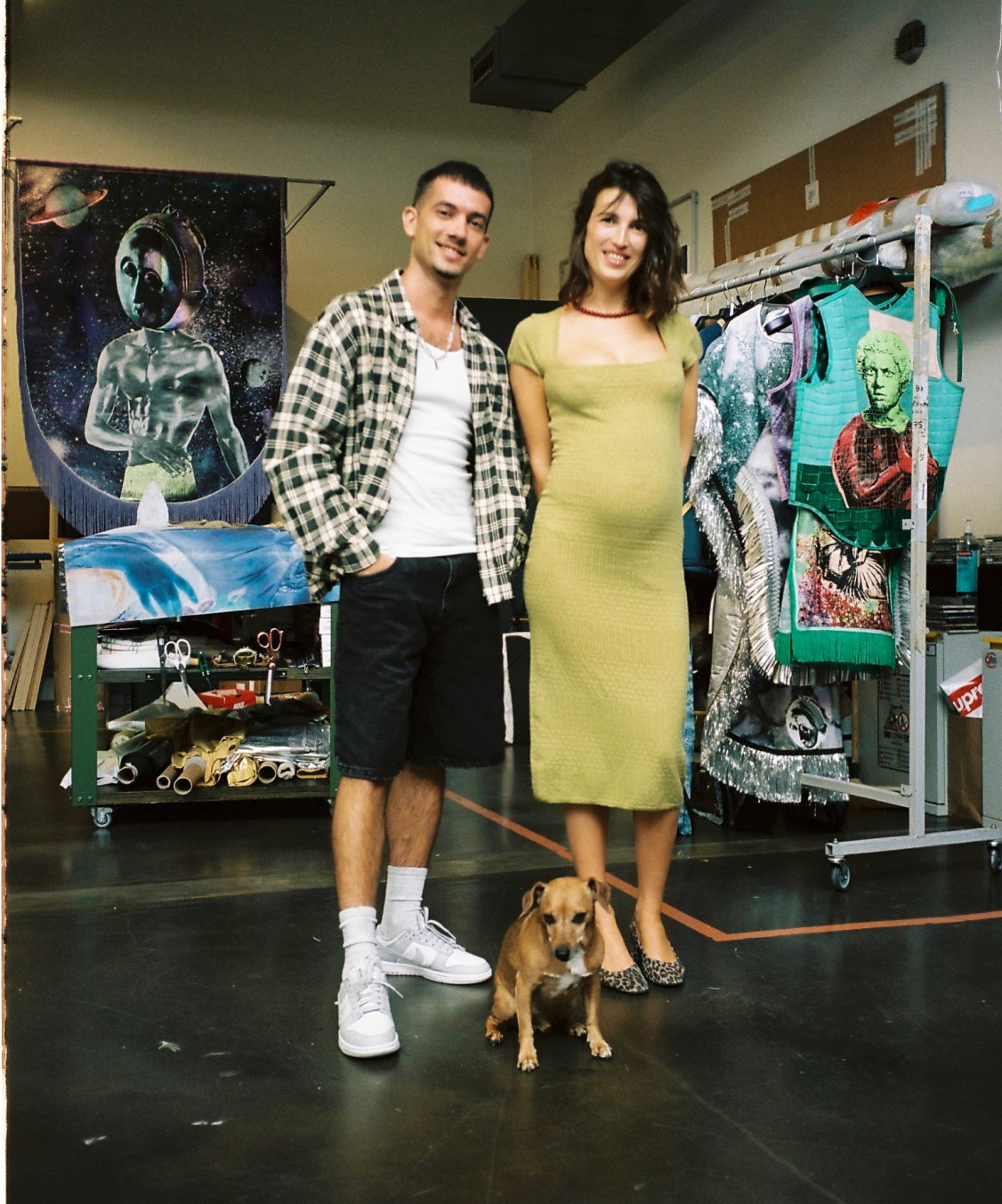
IMG #03
Raphaël Barontini with Jeanne Damas and Dobby in the artist's studio
JD: It's great when teachers are so encouraging. How do students specialise at the Beaux-Arts de Paris? Do you study a lot of different disciplines, sculpture, drawing etc., or do you choose your specialisation right from the start?
RB: The Beaux-Arts de Paris works in a pretty unique way. There are about 25 workshops led by professional artists. Each student is free to follow their interests, and they gravitate towards different teachers and artists.
Personally, painting is in my blood, and I've been interested in printmaking and silkscreen printing for a long time, so I knew I wanted to be in a painting workshop.
JD: That's interesting, because painting does not necessarily spring to mind when looking at your work.
RB: Yes, because my work is very multidisciplinary. Originally, I was interested in the history of painting, the history of representation. That's why there are so many figures and portraits in my work: they are a nod to our history.
JD: How did this project for the Panthéon come about?
RB: For several years, I have been working on a series of portraits of figures who were active in the fight against slavery, for example, and who are still largely unknown in mainland France. I was also interested mixed-race people who had a life and an impact here in Paris in the 18th century. My subjects ranged from the Chevalier de Saint-Georges, a great composer and swordsman, who was actually Marie-Antoinette's piano teacher, to Guillaume de Laetitia, an incredible painter who remains little known today. The people I researched typically had a European father, perhaps a planter or high-ranking French official in the Antilles. They often ended up in Paris to undertake
military training or artistic studies. I wanted to bring these figures back to life.
"When I left the Beaux-Arts
de Paris, my work became multidisciplinary, and I started to make very large-scale textiles, a
bit like patchwork or collage."
Raphaël BARONTINI
JD: A friend who studied at the Beaux-Arts de Paris told me that the teachers emphasised the importance of a strong message in their students' work, above and beyond the aesthetic qualities.
RB: I actually found the opposite. Oddly enough, I was met with a sort of disinterest when I raised any kind of political or historical questions at the Beaux-Arts.
JD: But you wanted to convey a message?
RB: Absolutely. At the end of my studies at the Beaux-Arts, I spent a year in New York, at Hunter College, where I discovered work by African-American artists in museums, which was certainly less common in France at the time. I decided that I wanted to continue this trajectory, and really think about what I wanted to say, to communicate. At the Beaux-Arts, I was very focused on painting, but I started experimenting with textiles towards my graduation. When I left the Beaux-Arts de Paris, my work became multidisciplinary, and I started to make very large-scale textiles, a bit like patchwork or collage.
JD: What support do you use? Fabric?
RB: I use digitally printed fabric as a base. I start by painting an abstract background, then I photograph it. Then I attach different figurative elements that are screen-printed on vinyl, because I love its shiny finish. As the fabric is very smooth, the prints are quite precise. I use a lot of different techniques on each piece, fusing and sewing on the various elements.
JD: Did you learn to work with textiles during your studies, or did you teach yourself?
RB: I definitely taught myself. I started on my family's sewing machine and made some really terrible seams, which I am a bit embarrassed to look at now. When I stumble upon my old work, I think "Oh my God, what a mess." I made progress with time, especially during Covid.
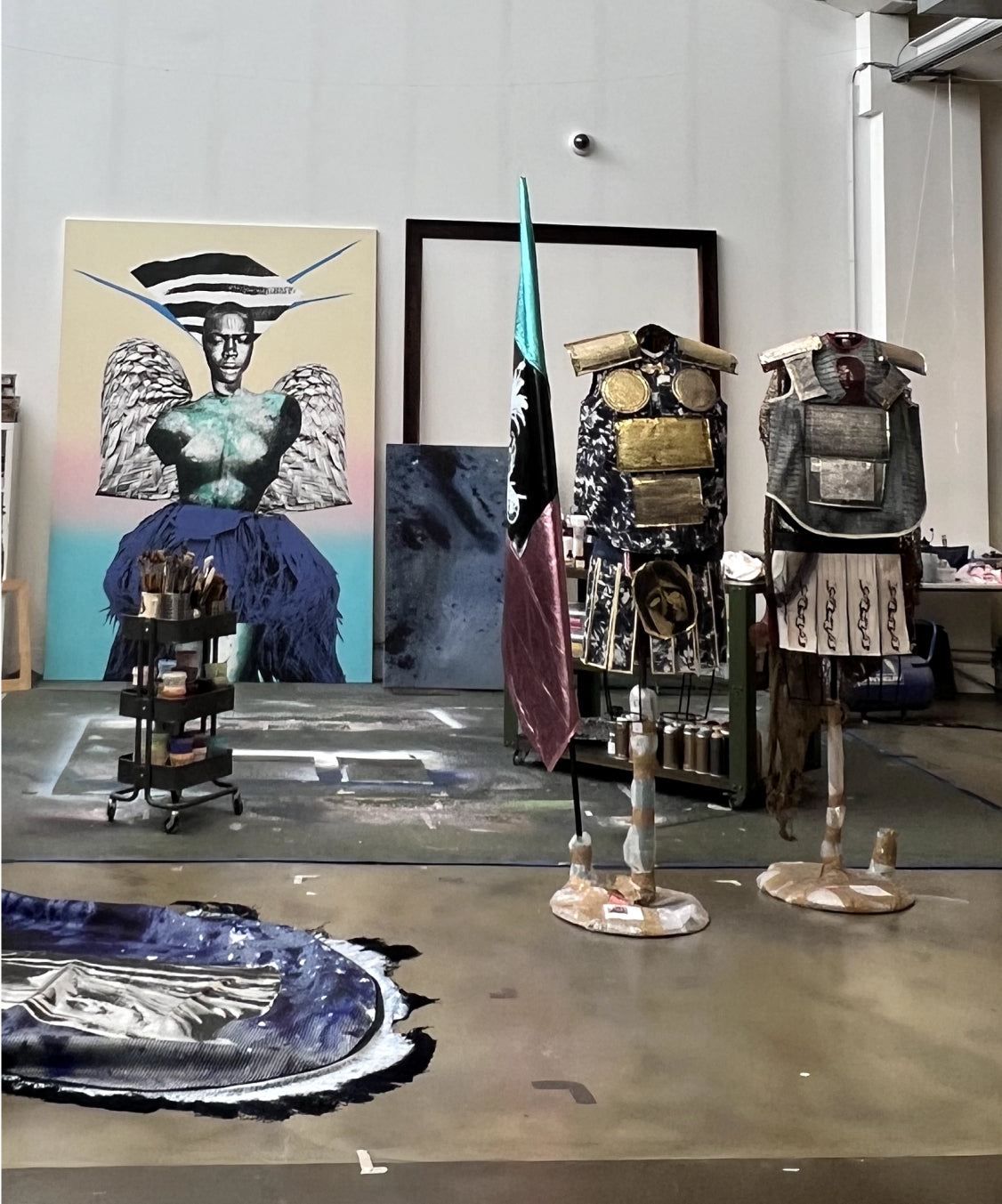
IMG #04
Danseuse Créole painting Acrylic paint and screen printing on canvas 270 x 190 cm and Black Spartacus leather outfits
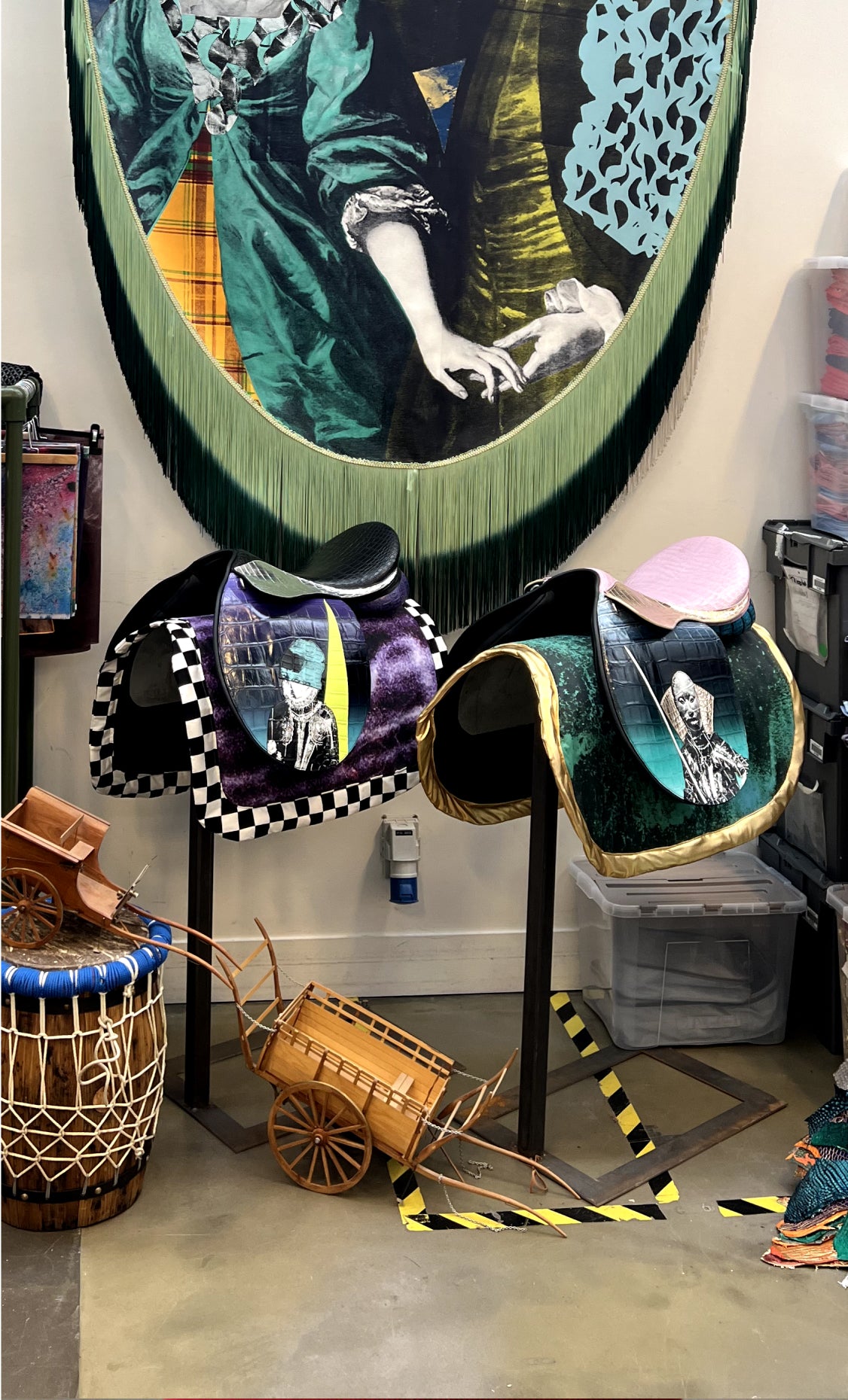
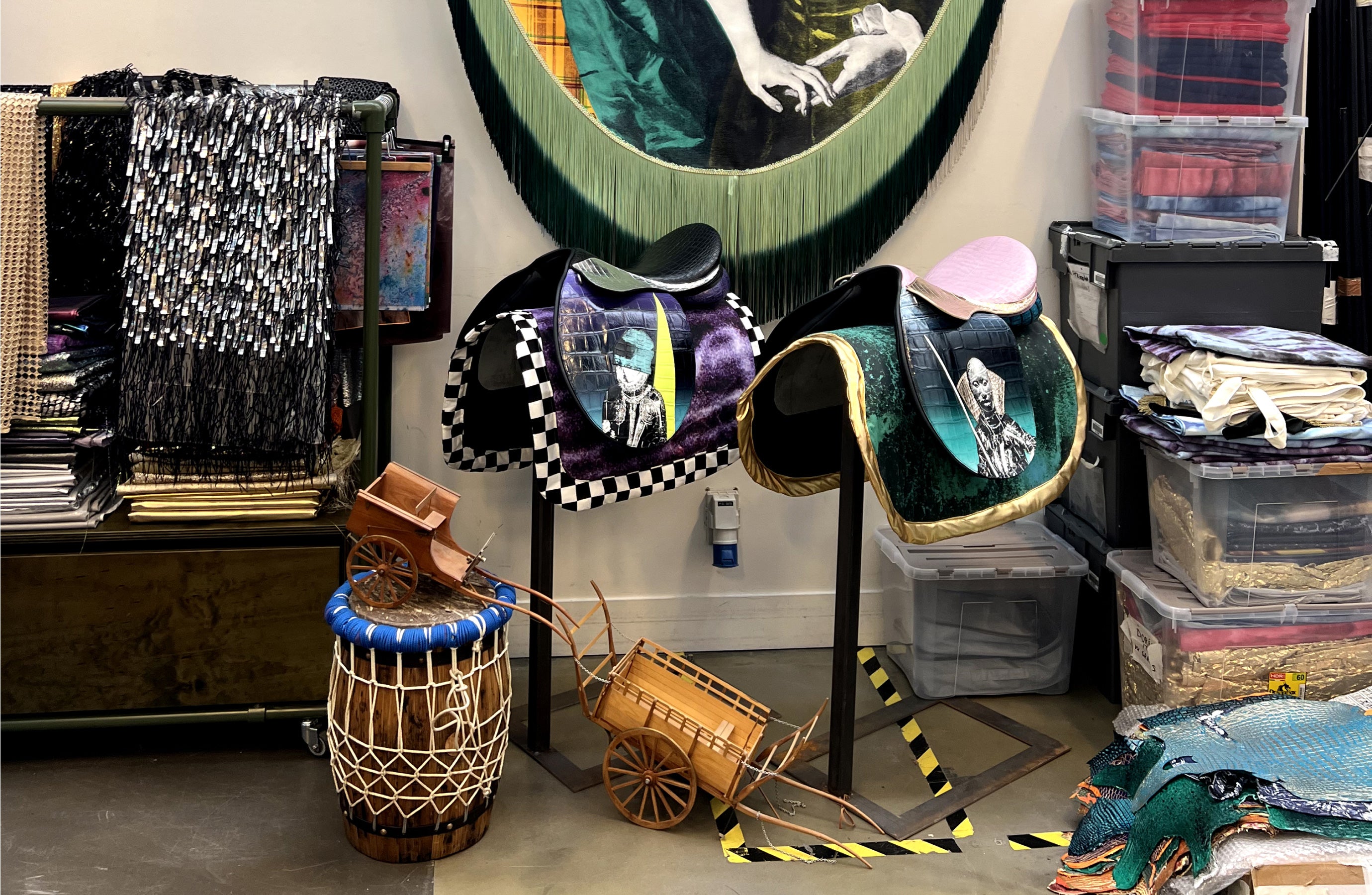
IMG #05
Pégase I & II riding saddle crafted in crocodile leather
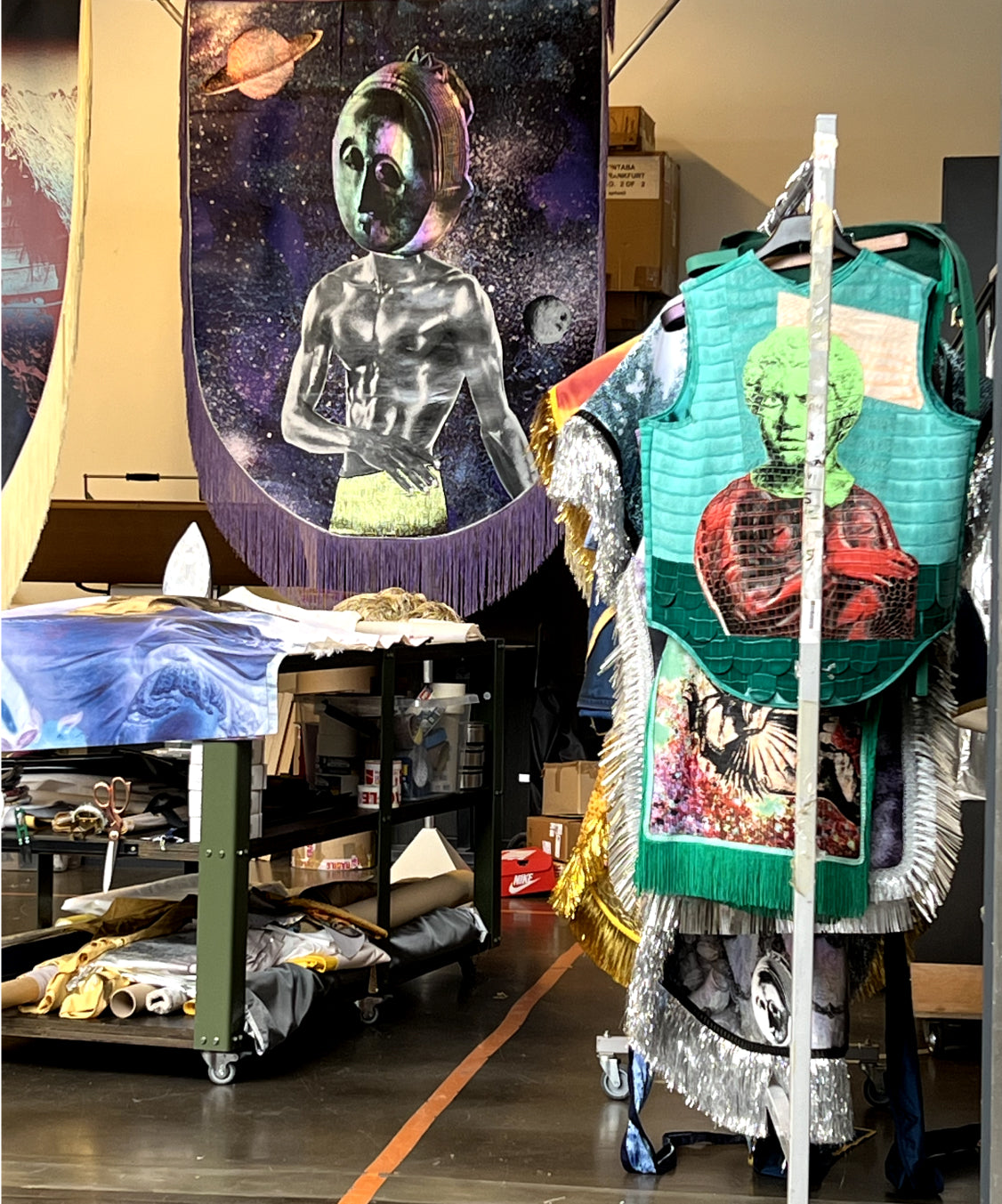
IMG #06
Baoulé Dancer and Allure Saint Maurice banner Screen and digital printing on leather and fabrics
JD: How long did it take you to hone your skills?
RB: I left art school in 2010. Between 2010 and 2015, I was really developing this side of my work.
JD: So you've been exploring this approach for almost 15 years. You definitely have a handle on it now...
RB: Well, there was a second key turning point: when I start making wearable pieces. I was invited to do a residency with LVMH's artisans in Singapore for six months, which ultimately became eight because of Covid. I was fascinated by the expertise of the leatherworkers in the fashion industry. Artists were invited to create pieces based on artisanal methods and techniques. The dialogue between creators was extremely interesting. Working so closely with artisans who specialise in accessories, their know-how and also the material quality of the leather directed me towards wearable pieces.
JD: Looking at all these materials, the textiles that you use, had me wondering about your relationship with fashion. You have also worked on parades. Is that something you are passionate about?
RB: Yes. I think I am a bit obsessed with the human body, it’s presence. It makes sense that my wearable pieces are brought to life. For example, recently I imagined a performance at the Nuit Blanche in Paris with professional hip-hop dancers and two carnival groups. My studio created 80 costumes.
JD: Excellent.
RB: It was great to see them wake up and come alive. I like both sides of the coin: I like when my wearable pieces become sculptures, but I also like when they are in motion.
JD: Did the Panthéon project begin right after your residency?
RB: No, three years later. The design phase was very lengthy. We had to make a 3D mock-up. Working in a monument brought some unique challenges, because we were barely allowed to touch or hang anything.
JD: Does the Panthéon not normally host artists?
RB: No, it's very rare. I think this was the third time. JR had a large installation there a few years ago. The request for a memorial on the history of the fight against slavery and abolition by a contemporary artist came from the CNM.
"The idea was to showcase little-known figures in the fight against slavery. I am well aware of this history, as part of my family came from Guadeloupe. I wanted to shift my lens a little by focusing primarily on the many women who took part in the fight against slavery at various levels."
Raphaël BARONTINI
JD: Can you sum up the message of the exhibition for anyone who missed it?
RB: The exhibition was called "We Could Be Heroes", and the idea was to showcase little-known figures in the fight against slavery. I am well aware of this history, as part of my family came from Guadeloupe, and I visited the Antilles many times when I was younger. In the Antilles, the past still makes its presence known, and the people are very connected to their roots. In mainland France,
however, people are largely ignorant of the true reality of slavery. I wanted to shift my lens a little by focusing primarily on the many women who took part in the fight against slavery at various levels. This is my portrait of Sanité Bélair, a rare female lieutenant in the revolutionary army n Haiti. She was an extremely strong woman.
JD: Did you paint her from an existing portrait?
RB: Yes, all my compositions, including textile
pieces, paintings and banners, draw on the idea of patchwork. I see myself as a collagist, and my aim is to tell a story by exploring different iconographic universes. I tap into the history of art, from classical paintings like court portraits to ancient sculptures like torsos and busts. However, I also like to include photography. I like working from photos, typically vintage shots from the dawn of the photographic age, which still allow me take a step back from current events. When I cannot find the right images for my work, I work with models instead. For all the works in the Panthéon, I used the incredible Quai Branly collection of 700,000 photographs, which cover a large portion of the history of colonisation. I was fascinated by the portraits of people who were photographed as part of an ethnographic inventory, but who faced down the camera with a proud, stately gaze: a look powerful enough to change the symbolism of the image.
JD: Do you think your work marked a change at the Panthéon? It was Joséphine Baker not so long ago.
RB: Yes, there is still scope for new beginnings at the Panthéon. I was surprised to find out that some of the figures I was planning to feature in my exhibition were
already memorialised in the Panthéon. Louis Delgrès from Martinique, for example. A high-ranking member of the French army, he became a resistance fighter and leader in Guadeloupe. Over the last few presidencies, we have seen a shift in how these figures are remembered.
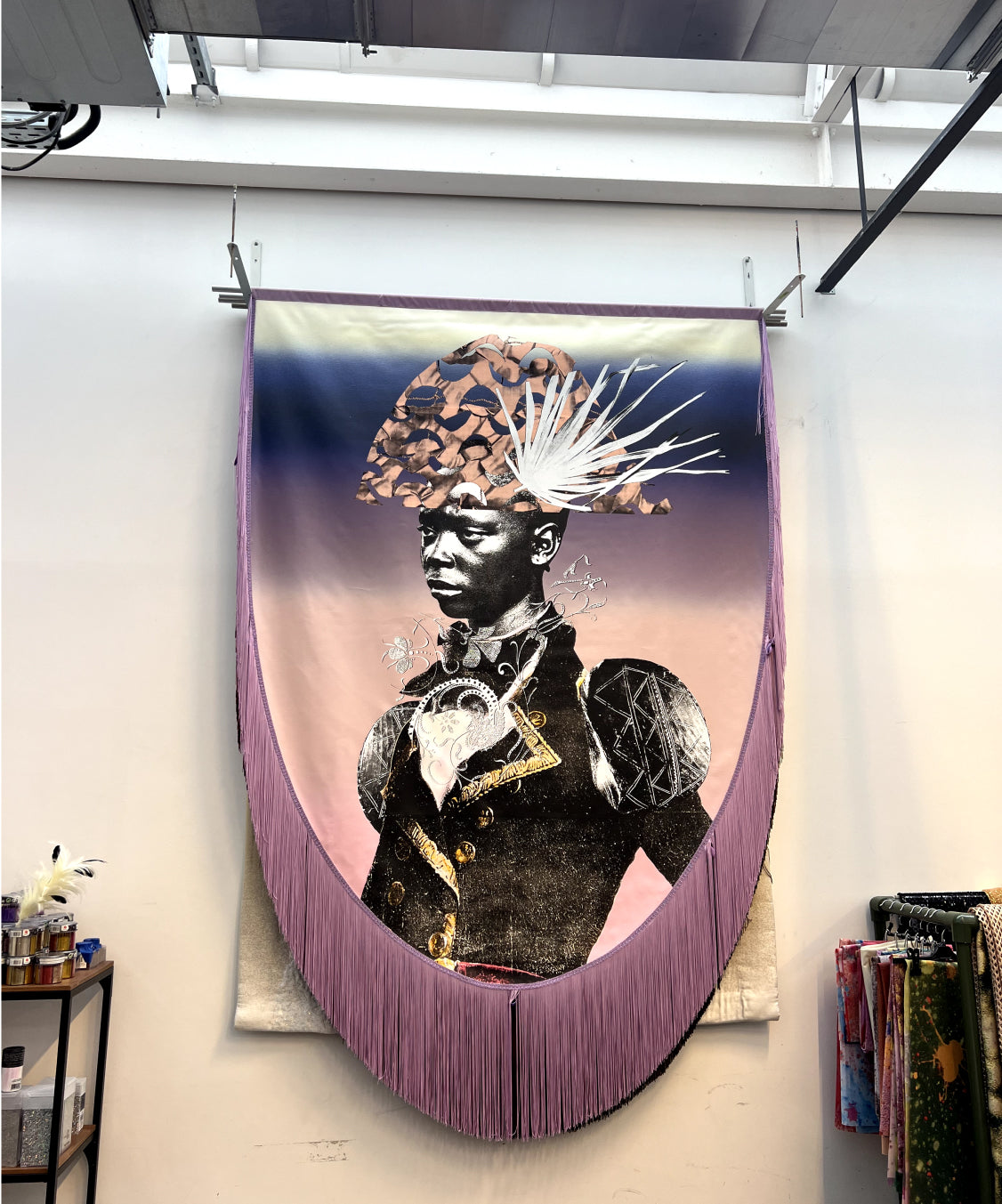
IMG #07
Sanité Belair banner
Acrylic paint and screen printing on canvas 240 x 165 cm
"All my compositions, including textile pieces, paintings and banners, draw on the idea of patchwork. I see myself as a
collagist, and my aim is to tell a story by exploring different iconographic universes."
Raphaël BARONTINI
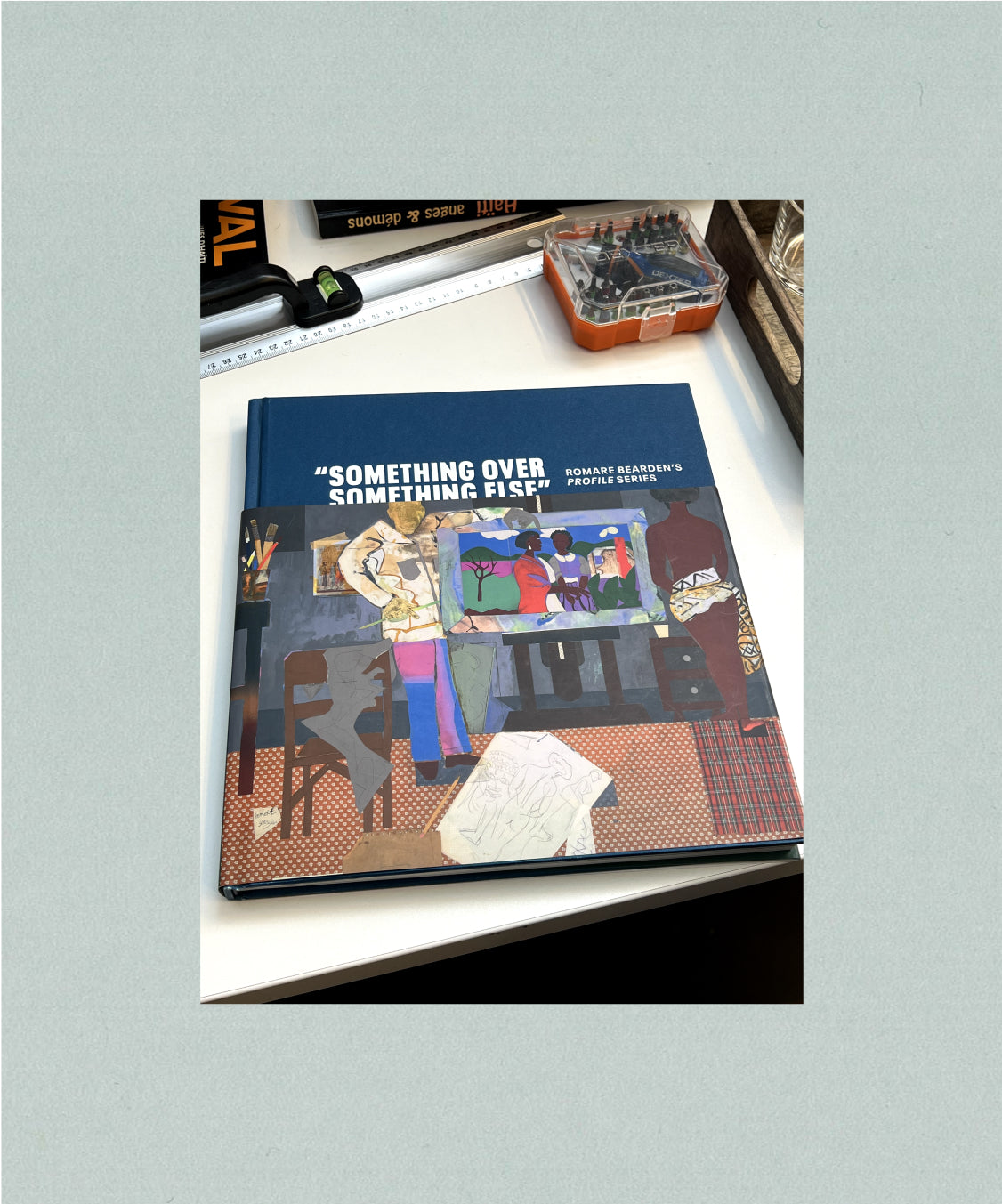
IMG #08
One of his sources of inspiration,
the work of romare bearden
JD: And your work will be on show soon in the Palais de Tokyo?
RB: Yes, that's the big project that has ruled my life for the last few months. The exhibition opens 20 February. It's a mixture of existing works and pieces that are currently in progress. I find it funny that I'm at a point in my career where I’m still considered an emerging artist, but I'm already being offered retrospective exhibitions. Some of the pieces from the Panthéon, especially textile pieces, will be making a grand return, but I still have a lot of work to do. I am working on an embroidery project, as well as several large new textile pieces.
JD: Are there any in the workshop?
RB: These costumes will be on display. We will create some new costumes, and we have also borrowed paintings from private collectors.
JD: A real retrospective… Are there any artists who inspire you, whose work you would like to share?
RB: I am often drawn to abstract painting, which may come as a surprise because my work is mostly figurative. For example, there is an African-American artist called Sam Gilliam who makes very large textile pieces with completely abstract painting, really playing with the theatricality of the textiles and the folds, their presence.
JD: How did you discover him?
RB: I discovered him in America, because his work is not very well known in France. There are also collage artists like Romare Bearden or Jacob Lawrence who are practically unknown here, but who mean a lot to me because they also specialise in collage. I love Romare Bearden and the poetic quality of his work. He also examines the history of painting, with photography and different elements diluted in ink, and the results are very dreamlike.
Courtesy of the artist
and Mariane Ibrahim Chicago, Paris and Mexico City.
